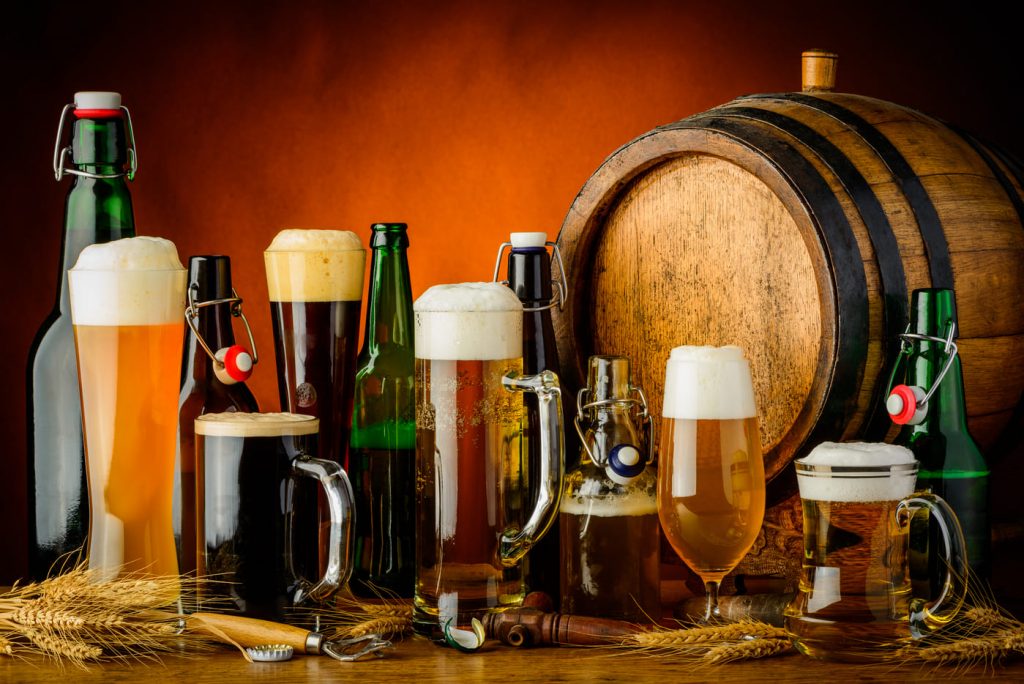Do you like beer? Make your own for less than 50 €

Brewing beer at home is easy and very convenient.
Everybody who loves beer has at one point considered trying to make their own. And while getting into homebrewing can seem like a daunting and difficult prospect, making your own beer at home is not hard to do, and you can get started with an initial investment of well under 50€.
Unlike cooking recipes which are expected to take a few hours at most, beer recipes have a timeline that is more like four weeks from beginning to end. While the wait may be long, it doesn’t take very much work to brew your own beer from malt extract. You’ll need a few special ingredients and pieces of equipment that can all be ordered online or provided by a local homebrew shop.
There are three major phases in the brewing process: wort making, fermentation, and packaging. Wort making is the step that requires the most work from the brewer, as you make a perfect solution for brewer’s yeast to turn into tasty beer. During wort making fermentable sugars from malt are combined with the flavor and antioxidant properties of hops. The next step is fermentation, the time when special yeast bred to ferment wort converts sugar into carbon dioxide (CO2) and ethyl alcohol (ethanol) to make beer. The final step of brewing is packaging. In most cases homemade beer will go into bottles but it can also go into large bottles called growlers or kegs for serving on draft. A small amount of sugar is added to the beer before it goes into individual bottles.

Before beginning the brewing process, you must first understand the four key ingredients necessary to brew a batch of beer. Understanding their basic qualities and how each ingredient is meant to react with the others is an important aspect of beer brewing:
Water: Water makes up 90 percent of the brew, so using tasty water makes a big difference.
Fermented Sugar: Malted barley is the ingredient commonly used to fill the sugar quota in a home brew recipe.
Hops are cone-like flowers found on a hop vine. They lend the bitter flavor to beer that balances out sweetness. Hops also inhibit spoilage and help keep the “head” (the frothy top when a beer is poured) around longer.
Yeast: First things first: Do not use bread yeast for beer brewing! Beer yeast is cultivated especially for use in brewing. Beer brewing boils down to mixing a mash of malted grain (often barley) with hops and then fermenting it with lager or ale yeasts. There are two broad categories of beer yeast: ale and lager. The yeast you choose helps determine the brew you end up with. Lagers are light, crisp and golden; ales, darker and more alcoholic.
The cheapest way to make beer is to purchase ingredients in bulk or grow your own. You could also consider brewing session beers that require fewer ingredients and buy more affordable brewing equipment to lower your startup cost.
Our first recommendation is to buy your grain and hops in bulk. Purchasing large bags of these ingredients decreases the price per pound, and if you’re planning on making lots of beer, you’ll need those ingredients anyway. Therefore, if you have the room, why not buy them in bulk?
If you don’t already have all the equipment needed for homebrewing, you can save on many initial startup costs by purchasing affordable brewing equipment. Homebrewing requires many tools, and having to buy all of these items can get extremely expensive. We suggest spending some time researching the best affordable brewing kits so that you can get as many tools as possible at once.
Another great way to save money on your brewing equipment is to find a brew buddy or two and buy the everything together and split up the costs.
Having friends who are interested in the same hobby makes brewing beer more fun and social. Each of you can hang onto the equipment and supplies at different times to get to know it. You can learn to make good beer by yourself, so you will also make great beer together as a team.
Another expense of homebrewing is bottling. I recommend bottling because it is easy to do, and drinking beer from a bottle is superior to cans and drafts. To save money on bottles, we suggest saving any empty bottles you go through and removing the labels to reuse them. This has the advantage of being environmentally friendly and prevents you from having to drop cash on new bottles for every brew.
